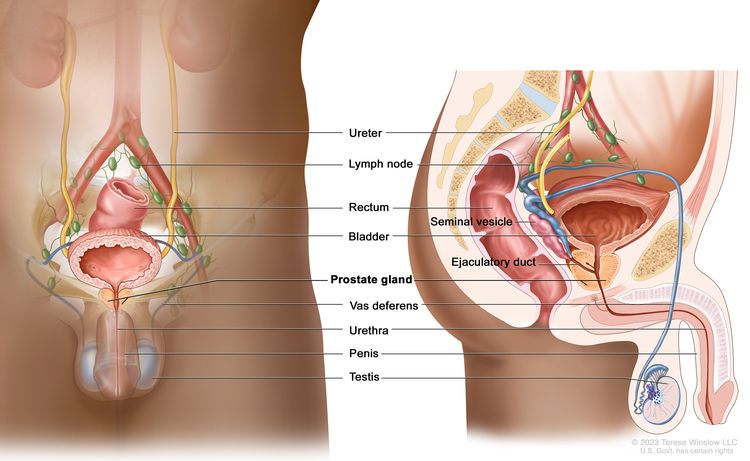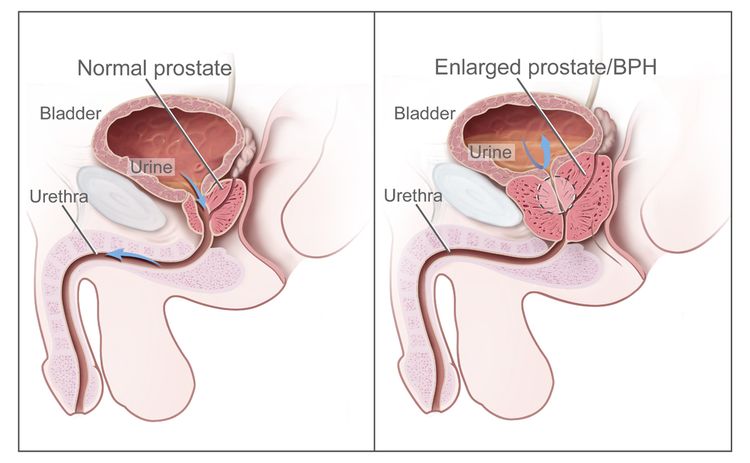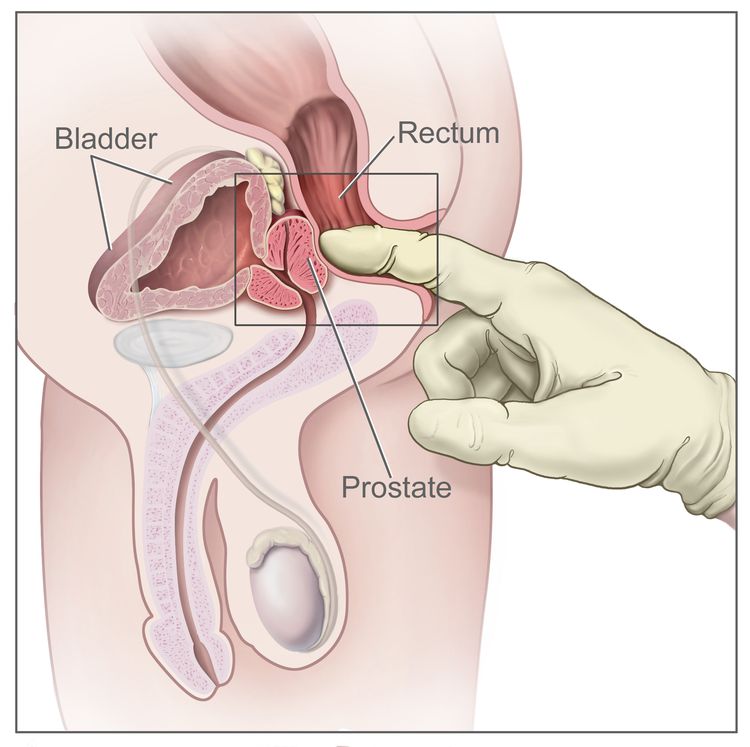National Cancer Institute
Post Date: Oct 19, 2023
Prostate cancer screening may help detect prostate cancer, but remains controversial as it has not been shown to reduce deaths from prostate cancer. Learn more about prostate cancer screening, including the potential benefits and harms, in this expert-reviewed summary.
Prostate Cancer Screening
What is screening?
Screening is looking for cancer before a person has any symptoms. This can help find cancer at an early stage. When abnormaltissue or cancer is found early, it may be easier to treat. By the time symptoms appear, cancer may have begun to spread.
Scientists are trying to better understand which people are more likely to get certain types of cancer. They also study the things we do and the things around us to see if they cause cancer. This information helps doctors recommend who should be screened for cancer, which screening tests should be used, and how often the tests should be done.
It is important to remember that your doctor does not necessarily think you have cancer if he or she suggests a screening test. Screening tests are given when you have no cancer symptoms. Screening tests may be repeated on a regular basis.
If a screening test result is abnormal, you may need to have more tests done to find out if you have cancer. These are called diagnostic tests.
General Information About Prostate Cancer
Key Points for this Section
- Prostate cancer is a disease in which malignant (cancer) cells form in the tissues of the prostate.
- Prostate cancer is the most common nonskin cancer among men in the United States.
- Different factors increase or decrease the risk of developing prostate cancer.
Prostate cancer is a disease in which malignant (cancer) cells form in the tissues of the prostate.
The prostate is a gland in the male reproductive system located just below the bladder (the organ that collects and empties urine) and in front of the rectum (the lower part of the intestine). It is about the size of a walnut and surrounds part of the urethra (the tube that empties urine from the bladder). The prostate gland produces fluid that makes up part of semen.
 Anatomy of the male reproductive and urinary systems showing the ureters, bladder, prostate gland, urethra, penis, testicles, and other organs.
Anatomy of the male reproductive and urinary systems showing the ureters, bladder, prostate gland, urethra, penis, testicles, and other organs.
As men age, the prostate may get bigger. A bigger prostate may block the flow of urine from the bladder and cause problems with sexual function. This condition is called benign prostatic hyperplasia (BPH), and although it is not cancer, surgery may be needed to correct it. The symptoms of benign prostatic hyperplasia or of other problems in the prostate may be similar to symptoms of prostate cancer.
 Normal prostate and benign prostatic hyperplasia (BPH). A normal prostate does not block the flow of urine from the bladder. An enlarged prostate presses on the bladder and urethra and blocks the flow of urine.
Normal prostate and benign prostatic hyperplasia (BPH). A normal prostate does not block the flow of urine from the bladder. An enlarged prostate presses on the bladder and urethra and blocks the flow of urine.
See the following PDQ summaries for more information about prostate cancer:
- Prostate Cancer Prevention
- Prostate Cancer Treatment
Prostate cancer is the most common nonskin cancer among men in the United States.
Prostate cancer is found mainly in older men. In the United States, about one out of every 8 men will be diagnosed with prostate cancer. Most men diagnosed with this disease do not die from it. Prostate cancer causes more deaths in men than any other cancer except lung cancer. Prostate cancer occurs more often in African American men than in White men. African American men with prostate cancer are more likely to die from the disease than White men with prostate cancer.
Different factors increase or decrease the risk of developing prostate cancer.
Anything that increases a person's chance of developing a disease is called a risk factor. Anything that decreases your chance of getting a disease is called a protective factor.
For information about risk factors and protective factors for prostate cancer, see Prostate Cancer Prevention.
Prostate Cancer Screening
Key Points for this Section
- Tests are used to screen for different types of cancer when a person does not have symptoms.
- There is no standard or routine screening test for prostate cancer.
- Digital rectal exam
- Prostate-specific antigen test
- A prostate cancer gene 3 (PCA3) RNA test may be used for certain patients.
- Screening tests for prostate cancer are being studied in clinical trials.
Tests are used to screen for different types of cancer when a person does not have symptoms.
Scientists study screening tests to find those with the fewest harms and most benefits. Cancer screening trials also are meant to show whether early detection (finding cancer before it causes symptoms) helps a person live longer or decreases a person's chance of dying from the disease. For some types of cancer, the chance of recovery is better if the disease is found and treated at an early stage.
There is no standard or routine screening test for prostate cancer.
Although there are no standard or routine screening tests for prostate cancer, the following tests are being used or studied to screen for it:
Digital rectal exam
Digital rectal exam (DRE) is an exam of the rectum. The doctor or nurse inserts a lubricated, gloved finger into the lower part of the rectum to feel the prostate for lumps or anything else that seems unusual.
 Digital rectal exam (DRE). The doctor inserts a gloved, lubricated finger into the rectum and feels the rectum, anus, and prostate (in males) to check for anything abnormal.
Digital rectal exam (DRE). The doctor inserts a gloved, lubricated finger into the rectum and feels the rectum, anus, and prostate (in males) to check for anything abnormal.
Prostate-specific antigen test
A prostate-specific antigen (PSA) test is a test that measures the level of PSA in the blood. PSA is a substance made mostly by the prostate that may be found in an increased amount in the blood of men who have prostate cancer. The level of PSA may also be high in men who have an infection or inflammation of the prostate or benign prostatic hyperplasia (BPH; an enlarged, but noncancerous, prostate).
A PSA test or a DRE may be able to detect prostate cancer at an early stage, but it is not clear whether early detection and treatment decrease the risk of dying from prostate cancer.
Studies are being done to find ways to make PSA testing more accurate for early cancer detection.
A prostate cancer gene 3 (PCA3) RNA test may be used for certain patients.
If a man had a high PSA level and a biopsy of the prostate did not show cancer and the PSA level remains high after the biopsy, a prostate cancer gene 3 (PCA3) RNA test may be done. This test measures the amount of PCA3 RNA in the urine after a DRE. If the PCA3 RNA level is higher than normal, another biopsy may help diagnose prostate cancer.
Screening tests for prostate cancer are being studied in clinical trials.
Information about clinical trials supported by NCI can be found on NCI’s clinical trials search webpage. Clinical trials supported by other organizations can be found on the ClinicalTrials.gov website.
Risks of Prostate Cancer Screening
Key Points for this Section
- Screening tests have risks.
- The risks of prostate screening include the following:
- Finding prostate cancer may not improve health or help a man live longer.
- Follow-up tests, such as a biopsy, may be done to diagnose cancer.
- False-negative test results can occur.
- False-positive test results can occur.
Screening tests have risks.
Decisions about screening tests can be difficult. Not all screening tests are helpful and most have risks. Before having any screening test, you may want to discuss the test with your doctor. It is important to know the risks of the test and whether it has been proven to reduce the risk of dying from cancer.
The risks of prostate screening include the following:
Finding prostate cancer may not improve health or help a man live longer.
Screening may not improve your health or help you live longer if you have cancer that has already spread to the area outside of the prostate or to other places in your body.
Some cancers never cause symptoms or become life-threatening, but if found by a screening test, the cancer may be treated. Finding these cancers is called overdiagnosis. It is not known if treatment of these cancers would help you live longer than if no treatment were given.
Treatments for prostate cancer, such as radical prostatectomy and radiation therapy, may have long-term side effects in many men. The most common side effects are erectile dysfunction and urinary incontinence.
Some studies of patients with newly diagnosed prostate cancer showed these patients had a higher risk of death from cardiovascular (heart and blood vessel) disease or suicide. The risk was greatest in the first weeks or months after diagnosis.
Follow-up tests, such as a biopsy, may be done to diagnose cancer.
If a PSA test is higher than normal, a biopsy of the prostate may be done. Complications from a biopsy of the prostate may include fever, pain, blood in the urine or semen, and urinary tractinfection. Even if a biopsy shows that a patient does not have prostate cancer, he may worry more about developing prostate cancer in the future.
Magnetic resonance imaging (MRI)−guided biopsy is being studied in the diagnosis of prostate cancer, either in place of, or in addition to, standard prostate needle biopsy.
False-negative test results can occur.
Screening test results may appear to be normal even though prostate cancer is present. A man who receives a false-negative test result (one that shows there is no cancer when there really is) may delay seeking medical care even if he has symptoms.
False-positive test results can occur.
Screening test results may appear to be abnormal even though no cancer is present. A false-positive test result (one that shows there is cancer when there really isn't) can cause anxiety and is usually followed by more tests, (such as biopsy) which also have risks.
Your doctor can advise you about your risk for prostate cancer and your need for screening tests.
About This PDQ Summary
About PDQ
Physician Data Query (PDQ) is the National Cancer Institute's (NCI's) comprehensive cancer information database. The PDQ database contains summaries of the latest published information on cancer prevention, detection, genetics, treatment, supportive care, and complementary and alternative medicine. Most summaries come in two versions. The health professional versions have detailed information written in technical language. The patient versions are written in easy-to-understand, nontechnical language. Both versions have cancer information that is accurate and up to date and most versions are also available in Spanish.
PDQ is a service of the NCI. The NCI is part of the National Institutes of Health (NIH). NIH is the federal government’s center of biomedical research. The PDQ summaries are based on an independent review of the medical literature. They are not policy statements of the NCI or the NIH.
Purpose of This Summary
This PDQ cancer information summary has current information about prostate cancer screening. It is meant to inform and help patients, families, and caregivers. It does not give formal guidelines or recommendations for making decisions about health care.
Reviewers and Updates
Editorial Boards write the PDQ cancer information summaries and keep them up to date. These Boards are made up of experts in cancer treatment and other specialties related to cancer. The summaries are reviewed regularly and changes are made when there is new information. The date on each summary ("Updated") is the date of the most recent change.
The information in this patient summary was taken from the health professional version, which is reviewed regularly and updated as needed, by the PDQ Screening and Prevention Editorial Board.
Clinical Trial Information
A clinical trial is a study to answer a scientific question, such as whether one treatment is better than another. Trials are based on past studies and what has been learned in the laboratory. Each trial answers certain scientific questions in order to find new and better ways to help cancer patients. During treatment clinical trials, information is collected about the effects of a new treatment and how well it works. If a clinical trial shows that a new treatment is better than one currently being used, the new treatment may become "standard." Patients may want to think about taking part in a clinical trial. Some clinical trials are open only to patients who have not started treatment.
Clinical trials can be found online at NCI's website. For more information, call the Cancer Information Service (CIS), NCI's contact center, at 1-800-4-CANCER (1-800-422-6237).
Permission to Use This Summary
PDQ is a registered trademark. The content of PDQ documents can be used freely as text. It cannot be identified as an NCI PDQ cancer information summary unless the whole summary is shown and it is updated regularly. However, a user would be allowed to write a sentence such as “NCI’s PDQ cancer information summary about breast cancer prevention states the risks in the following way: [include excerpt from the summary].”
The best way to cite this PDQ summary is:
PDQ® Screening and Prevention Editorial Board. PDQ Prostate Cancer Screening. Bethesda, MD: National Cancer Institute. Updated
Images in this summary are used with permission of the author(s), artist, and/or publisher for use in the PDQ summaries only. If you want to use an image from a PDQ summary and you are not using the whole summary, you must get permission from the owner. It cannot be given by the National Cancer Institute. Information about using the images in this summary, along with many other images related to cancer can be found in Visuals Online. Visuals Online is a collection of more than 3,000 scientific images.
Disclaimer
The information in these summaries should not be used to make decisions about insurance reimbursement. More information on insurance coverage is available on Cancer.gov on the Managing Cancer Care page.
Contact Us
More information about contacting us or receiving help with the Cancer.gov website can be found on our Contact Us for Help page. Questions can also be submitted to Cancer.gov through the website’s E-mail Us.